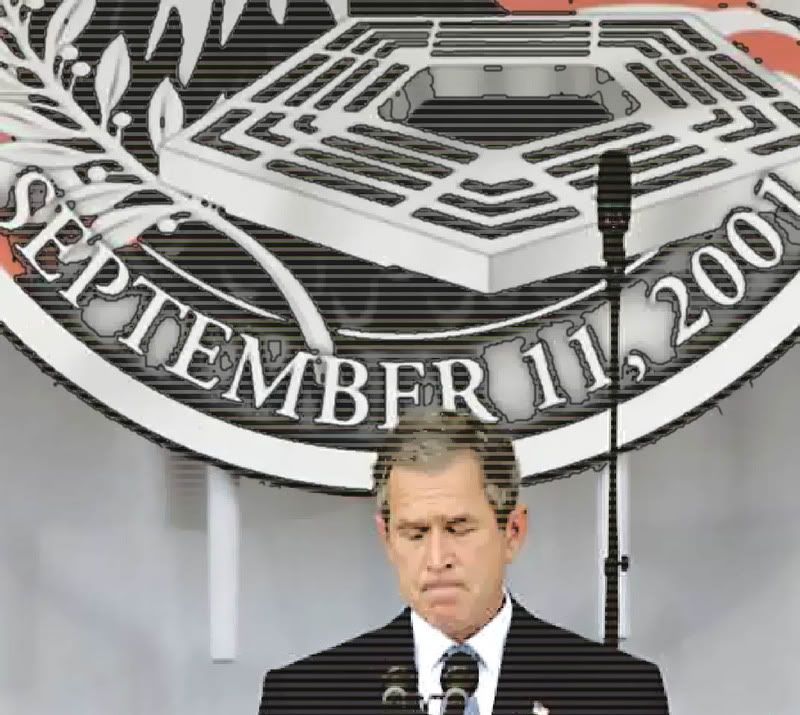Adam Larson/Caustic Logic
Posted 4/30/07
For whatever It’s worth, it was the 102nd birthday of the late neocon intellectual godfather Leo Strauss when, on September 20th 2001, as President Bush prepared to give an address to a special joint session of Congress pitching the “War on Terrorism” to a stunned nation, the PNAC delivered an open letter to Bush entitled, humbly, “Lead the World to Victory.” [signed by Kristol, Bauer, Cropsey, Cohen, Gaffney, two Kagans, Perle, Podhoretz, Schmitt, etc.] Full text available here.
The letter lauded Bush’s tough response to the attack and his framing of it as a war, and praised the administration’s public assertions that the campaign would be fought on many fronts, and early hints that it would not be limited to al Qaeda. They encouraged this thinking and suggested some of their own ideas as to what other fronts should be opened; for starters, they offered Hezbollah, the Palestinian Authority, and, of course, Iraq, with a hint of more threats to come. These suggestions bore more similarity to an Israeli wish-hit-list than any realistic response to the nine-day-old 9/11 attacks. The proposals of the letter could have just as easily been passed on by Cheney, (and probably already had been) but they wanted it to look open, and perhaps more importantly, to bring their ideas to the attention of the stunned and suggestible public on the same day Bush was going public with his own guaranteed war proposal. It was a highly visible formal entreaty to cover for pre-arranged back-room deals that became evident as Bush spoke that evening.
The nation drew in a breath and listened; just nine days after the attack, and after much discussion with his august advisers, Bush already knew the shape and scope of the war at hand. He informed his fellow Americans that “this war will not be like the war against Iraq a decade ago, with a decisive liberation of territory and a swift conclusion. It will not look like the Air Wars above Kosovo two years ago, where no ground troops were used and not a single American was lost in combat… Americans should not expect one battle, but a lengthy campaign, unlike any other we have ever seen.” IWith his fatwa “either you are with us, or you are with the terrorists,” Bush charted a clearly unilateralist direction – we were going this way, others would either follow or hold back at their own risk, a clear nod to the PNAC’s Concept of unilateralism (or, more accurately, multilateralism via “global leadership”). He had almost certainly read the Project’s letter well before he spoke, and had likely already acceded to all of its major proposals.
The following day, Charles Krauthammer’s essay “Voices of moral obtuseness” appeared in Time, arguing the same case as the PNAC’s letter. He had, in fact, signed the letter. Krauthammer lamented that “in the wake of a massacre that killed more than 5,000 innocent Americans in a day, one might expect moral clarity,” but we were instead hearing criticism of U.S. policy, what he saw as a relativist, liberal “we had it coming” attitude. He was of course right in his observation that the attack was an “event of blinding clarity,” although I’m not sure he sees the irony in that phrase. Krauthammer noted the earlier dissolution of anti-war and isolationist sentiment following the attack on Pearl Harbor, an analogy that had to have his colleagues at the PNAC smiling as they set about implementing their "process of transformation."
One month after the attack, Bush delivered a speech at the wounded Pentagon, offering a more concrete assurance of his dedication to the PNAC vision. On a dreary Thursday morning, October 11th, 2001, he reassured the Project, on at least four key points, that 9-11 was indeed the fulfillment of their year-old report Rebuilding America’s Defenses.
 |
2) Perhaps in response to the PNAC’s call for increased ”defense” budgets, Bush assured them “in the missions ahead for the military, you will have everything you need, every resource, every weapon, every means to assure full victory for the United States and the cause of freedom.”
3) Bush reassured them that “brick by brick, we will quickly rebuild the Pentagon.” It’s interesting to note that the Pentagon did not need to be rebuilt, just repaired. But he didn’t say repaired; he said the Pentagon would be re-built, possibly code for a Rebuilding America’s Defenses. And it would be done “quickly,” as in the desired speed of the “process of transformation.”
4) The report had called for the U.S. to “fight and decisively win multiple, simultaneous major theater wars.” A year and a month later, Bush reassured them and the world that “we have a unified country. We have the patience to fight and win on many fronts.”
It appears the PNAC was essentially quite pleased with the direction the Administration was taking, following their road map to the expansion of the Pax Americana and to continued “American global leadership.” Bush in turn seemed pleased with the response to the attack that the PNAC had prepared a year before it happened. Of course, they all had to understand the irony that this road map would not have been followed so quickly, as the Project had earlier noted, without the realization of the “new Pearl Harbor.” It turned out well for the Project; their laboriously crafted roadmap was being followed, and they set about refining its details and positioning the military’s machinery to start moving by it. By the time of Bush's 10/11 speech, bombs were already falling on Afghanistan, troops and aircraft carriers were soon moving to all the other pushpins on the Pentagon’s big map, and the plan to take Iraq was put into motion. Their “New American Century” had begun with a bang.



No comments:
Post a Comment